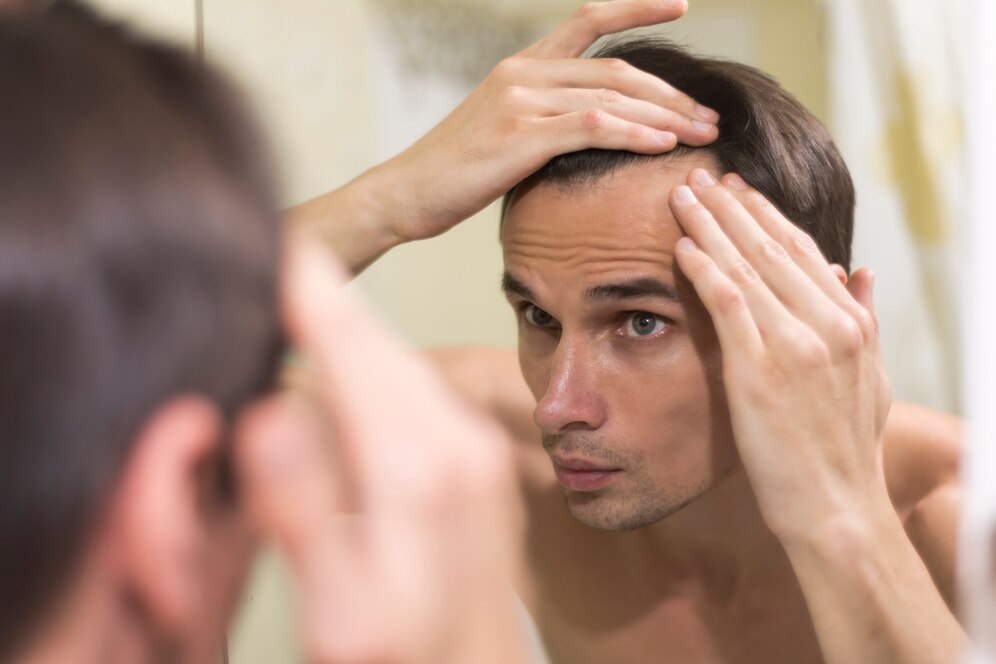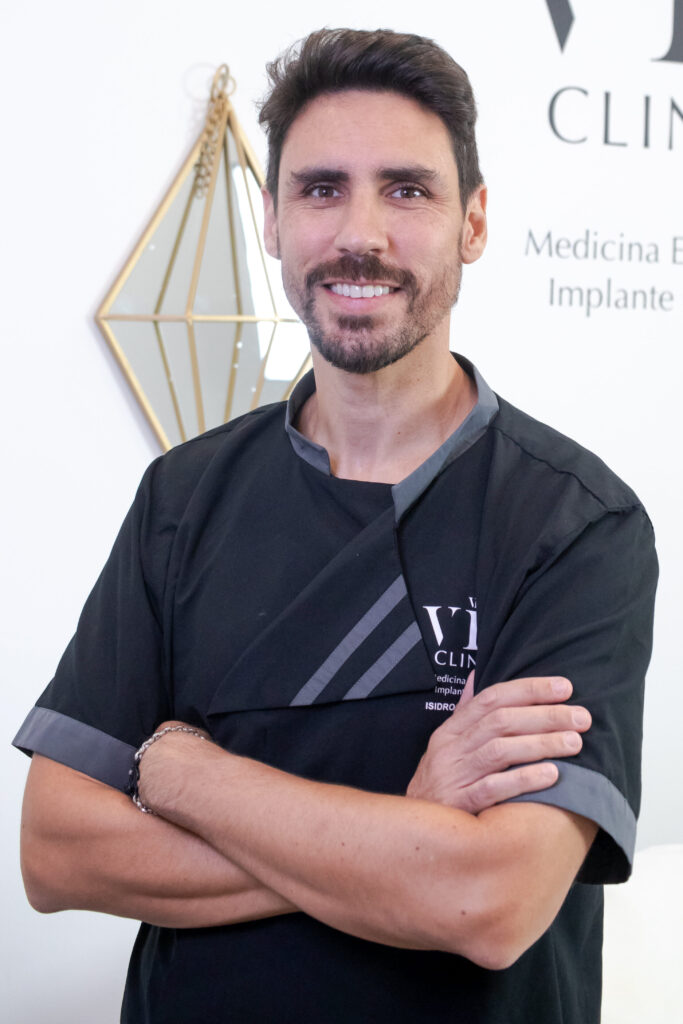Exosome Therapy in Alicante
Alicante exosome treatment is a cutting-edge medical approach that has gained significant attention for its remarkable potential in skin rejuvenation and treatment. In Alicante, Spain, this innovative form of regenerative medicine has found its niche, with numerous clinics and providers offering top-notch exosome treatment services in Alicante. This article explores the world of Alicante Exosome Treatment, shedding light on its benefits, applications and the main suppliers in the region.
-
Exosome Therapy in Alicante: Alicante, known for its picturesque landscapes and beautiful Mediterranean coastline, has also become a center for the *best exosome treatment*. Exosome therapy is no exception. The city offers a wide range of clinics and providers that specialize in this regenerative approach. Patients from all over the world visit Alicante in search of the best exosome treatment, attracted by the city's reputation for excellence in this field.
Several clinics and providers in Alicante excel in Exosome Treatment. They have earned recognition for their expertise, state-of-the-art facilities and commitment to patient wellness. These facilities offer comprehensive Exosome Treatment options, ensuring that patients receive the highest standard of care. - Benefits of exosome treatment: Exosome therapy offers a number of advantages, making it an attractive option for people seeking rejuvenation and improved skin health. These advantages include:
- Non-invasive: Exosome therapy is a non-invasive procedure, which means that it does not require surgical incisions or tissue removal. Instead, exosomes, tiny vesicles released by stem cells, are applied topically or injected into the skin. This non-invasive approach reduces the risks associated with surgery, such as infection and scarring, making it an attractive option for those who want to improve their skin without going under the knife.
- Minimal downtime: One of the significant advantages of exosome therapy is the minimal downtime involved. Unlike surgical procedures, which can require weeks or even months of recovery, patients undergoing exosome treatment experience minimal disruption to their daily lives. After a session of exosome therapy, people can usually resume their regular activities quickly. This short recovery period particularly appeals to those with busy schedules and responsibilities.
- Natural Regeneration: Exosome therapy harnesses the body's natural regenerative processes. Exosomes, derived from stem cells, contain a potent cocktail of growth factors and signaling molecules. When applied to the skin, these exosomes induce the body to initiate its natural healing and regeneration mechanisms. The therapy does not depend on external substances or artificial additives. Instead, it encourages the skin to repair and rejuvenate, resulting in a more natural and long-lasting effect.
- Customized treatments: Exosome therapy is very versatile and can be customized to address specific skin concerns. Whether a patient is dealing with fine lines, scars, uneven pigmentation or other skin problems, treatment can be tailored to their needs. By adjusting the concentration and application method of exosomes, healthcare providers can provide customized solutions that address a patient's unique skin challenges. This personalized approach ensures that individuals receive the most effective treatment for their conditions, improving overall outcomes and patient satisfaction.
- Specific skin health benefits: Exosome therapy has immense potential to improve skin health. Some of the specific skin benefits include:
- Wrinkle reduction: Exosome therapy can effectively reduce the appearance of fine lines and wrinkles.
- Skin tightening: Promotes collagen production, leading to firmer, more youthful skin.
- Scar reduction: Exosomes can help scars to heal and reduce their visibility.
- Improved skin texture: The therapy improves skin texture, leaving it smoother and more radiant.

Exosome therapy for skin rejuvenation
Exosome treatment, often dubbed as "liquid gold" for the skin, plays a key role in exosome treatment for skin rejuvenation. The therapy stimulates the production of collagen and elastin, which are essential for maintaining youthful, healthy skin. Exosomes, small vesicles released by stem cells, contain growth factors and signaling molecules that signal the body to regenerate and repair damaged tissues through exosome treatment.
Exosome skin therapy
Exosome skin treatment involves the application of exosomes, which are extracted from stem cells to the skin. These exosomes carry bioactive molecules and proteins that promote tissue repair and regeneration as part of exosome skin treatment. When applied to the skin, they work at the cellular level, stimulating the production of collagen and elastin.
How exosomes improve the quality and appearance of the skin
Exosomes improve the quality and appearance of the skin through several mechanisms:
Collagen production: Exosomes stimulate collagen production, increasing skin firmness and elasticity.
Cell renewal: Promotes skin cell renewal, replacing damaged cells with healthy ones.
Anti-inflammatory properties: Exosomes have anti-inflammatory effects, reducing redness and irritation.
Hydration: Exosome therapy improves skin hydration, creating a more youthful, smoother appearance.
Hair Transplant Surgery Protocol

Initial consultation
The process begins with an initial consultation with a qualified hair transplant specialist. During this meeting, the specialist evaluates the causes of the patient's hair loss, discusses the patient's goals and expectations, and determines the most appropriate transplantation technique.

Preoperative planning
Prior to the procedure, the surgeon outlines the hairline and designs a plan for hair placement. The donor area is identified, typically on the back or sides of the head, where the hair is most resistant to balding.

Anesthesia
On the day of the procedure, local anesthesia is administered in both the donor and recipient areas to ensure that the surgery is painless. Patients remain conscious during the procedure, but are comfortable and relaxed.
Medical hair treatment options
When it comes to addressing hair loss, there are several medical treatment options available that can help promote hair growth and decrease further hair loss. These treatments are often suitable for people experiencing different types and stages of hair loss. Here, we will delve into the details of both surgical and non-surgical medical hair treatment options that can be considered:
Topical medications
Minoxidil (Rogaine): Minoxidil is a recognized over-the-counter hair loss treatment available in foam or liquid form. It is applied directly to the scalp and is available in different concentrations. Minoxidil is known for its ability to stimulate hair follicles, promoting hair growth, making it a suitable choice for both men and women.
Finasteride (Propecia): Finasteride is an oral medication available by prescription and is often included in hair loss treatment plans online. It works by inhibiting the hormone dihydrotestosterone (DHT), which plays a crucial role in hair loss, particularly in cases of androgenic alopecia. Finasteride is generally prescribed to men and is known to be effective in preventing further hair loss and promoting hair growth in some cases.
Low level laser therapy (LLLT)
LLLT is a non-invasive treatment that involves the use of low power lasers or light emitting diodes (LEDs) to stimulate hair follicles. This therapy can be administered through devices such as laser caps, helmets or combs. LLLT is believed to increase blood flow to the scalp and stimulate hair growth. It is suitable for both men and women and can be used in conjunction with other treatments.
Hair transplant procedures
Follicular Unit Transplantation (FUT): FUT, often referred to as the "strip method", is considered one of the best hair treatments for hair loss. It involves the removal of a strip of skin with hair follicles from the back or sides of the scalp. The strip is then dissected into individual follicular units and transplanted to bald or thinning areas. FUT can produce a high number of grafts in a single session, making it suitable for cases of extensive hair loss.
Follicular Unit Extraction (FUE): FUE is a more modern and minimally invasive method of hair transplantation. Individual hair follicles are removed one by one from the donor area, typically at the back of the scalp, and transplanted to the recipient area. FUE leaves minimal scarring and allows for a more natural looking result. It is suitable for both men and women.
Platelet Rich Plasma (PRP) Therapy
PRP therapy is a regenerative treatment that uses the patient's own blood. A small amount of blood is drawn, processed to concentrate the platelets and then injected back into the scalp. Platelets contain growth factors that can stimulate hair follicles, promoting hair growth. PRP is considered a non-surgical option and is often used in conjunction with other treatments.
Stem cell therapy
Stem cell therapy is considered one of the best treatments for hair loss and is an emerging field in hair restoration. It involves the use of stem cells, often derived from the patient's own adipose tissue or other sources, to stimulate hair growth. While research is ongoing, stem cell therapy shows potential as a possible non-surgical treatment for hair loss, making it a promising option for people seeking effective hair restoration solutions.
Scalp Micropigmentation (SMP)
Before the Procedure
Consultation with your hair doctor: You will have a consultation with your hair doctor to discuss your hair loss problems, diagnosis and treatment plan.
Pre-procedure instructions: Depending on the procedure, you may receive specific instructions, such as washing your hair and avoiding certain medications.
Type of treatment: Depending on your diagnosis, you may undergo surgical or non-surgical treatment.
4. Anesthesia (surgical procedures): For surgical procedures, local anesthesia is administered to minimize discomfort.
5. Donor area preparation (FUT): In FUT, the donor area is prepared and the hair is trimmed for extraction.
6. Hair Follicle Extraction (FUE): In FUE, individual hair follicles are extracted from the donor area.
7. Creation of the recipient site: Incisions are made in the recipient area for graft placement.
8. Graft placement: The extracted hair follicles are carefully placed in the recipient sites.
9. Duration of the procedure: The duration of the procedure varies according to the type and complexity of the treatment.
After the procedure
Aftercare (non-surgical): After applying topical medications or undergoing LLLT, allow them to dry and be consistent with their use.
2. Immediate post-procedure (surgical) care: After surgery, you may experience discomfort, swelling and minor bleeding.
3. Donor area care (FUT): For FUT, keep the donor area clean, dry and avoid activities that stress the sutured area.
4. Care of the recipient area (both FUT and FUE): Avoid touching or scratching the recipient area. Follow the guidelines for washing and cleaning the hair.
5. Recovery and healing: Expect scabbing and shedding of transplanted hairs in the weeks following surgery. New hair growth will emerge in the coming months.
6. Follow-up appointments: Your physician will schedule follow-up appointments to monitor your progress and address your concerns.
7. Long-term care: Continue with the recommended treatment plan for ongoing maintenance and to preserve results.
Contact us
Frequently asked questions about hair treatments in Alicante
When looking for the best hair doctor, consider their qualifications, experience, patient reviews and the variety of treatments they offer.
Although specific recommendations may vary, look for clinics with good reputations, experienced staff and a history of successful treatment.
Medical hair treatments include non-surgical options such as topical medications and low-level laser therapy, as well as surgical procedures such as hair transplants and platelet-rich plasma (PRP) therapy.
Minoxidil and finasteride are commonly used medications for hair loss. While minoxidil is available over-the-counter, finasteride generally requires a prescription. The best medication depends on your specific condition and should be discussed with a hair dermatologist.
Seek recommendations from friends, family and online resources. Consult *doctors specializing in hair treatments in Alicante*, read reviews and schedule consultations to find a doctor who can tailor a treatment plan to your needs.
Yes, online hair loss treatment, including telemedicine consultations, is a convenient option. You can consult with a hair doctor virtually, discuss your concerns and receive treatment recommendations.
The best treatment varies depending on the type and severity of hair loss. Non-surgical treatments such as minoxidil and laser therapy are effective for some, while surgical procedures such as hair transplants may be appropriate for more advanced cases.
Consider factors such as the cause and type of hair loss, your budget, expected recovery time and possible side effects when selecting a treatment. It is crucial to consult a hair dermatologist to make an informed decision.
Yes, there are some natural remedies and lifestyle changes that can promote hair health, including a balanced diet, stress management, and proper hair care routines.
Hair restoration results take time. It may take several months before noticeable improvements are seen, and patience is needed to achieve the desired result.



SMP is a non-invasive cosmetic procedure in which pigment is tattooed into the scalp to create the illusion of hair follicles. It is primarily used to camouflage bald spots, create the appearance of a freshly shaved head or enhance the results of a hair transplant.